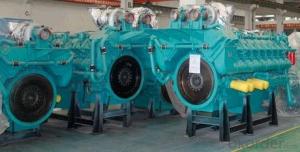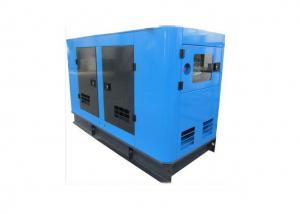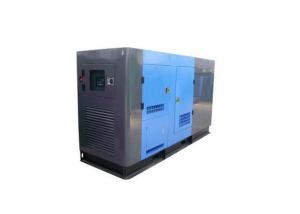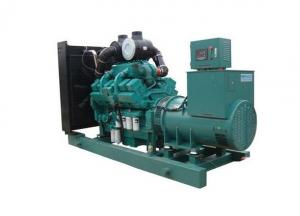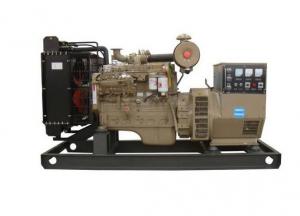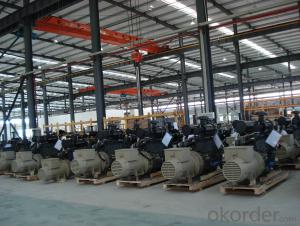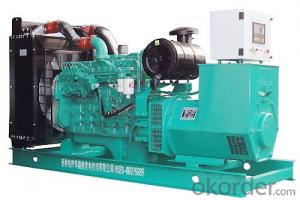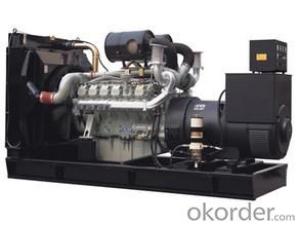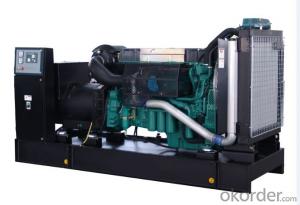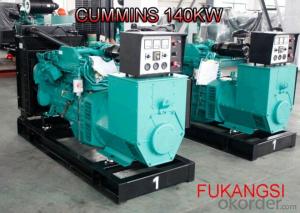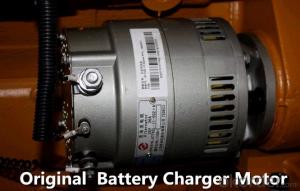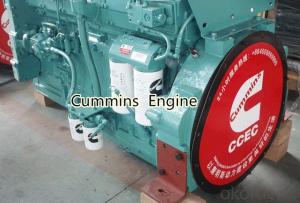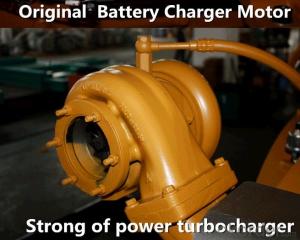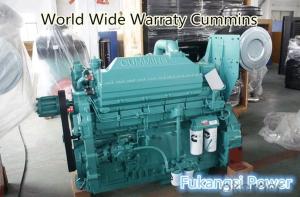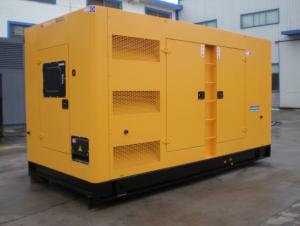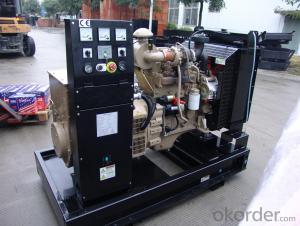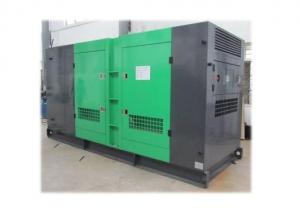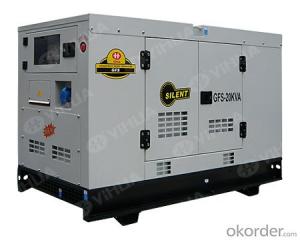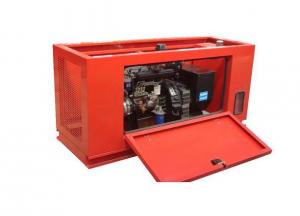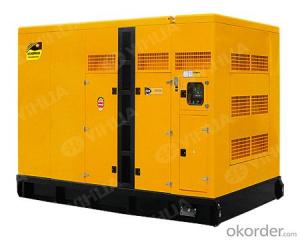Product list of China Lovol Engine type (lovol)100
- Loading Port:
- Shanghai
- Payment Terms:
- TT OR LC
- Min Order Qty:
- 1 set
- Supply Capability:
- 5000 set/month
OKorder Service Pledge
Quality Product, Order Online Tracking, Timely Delivery
OKorder Financial Service
Credit Rating, Credit Services, Credit Purchasing
You Might Also Like
Specifications
This Generator powered lovol
| Model | Prime Power (KW) | Standby Power (KW) | Engine Model | Engine Power |
| FKS-L22 | 20 | 22 | 1003G1A | 26/29 |
| FKS-L27 | 25 | 27 | 1003G | 28/31 |
| FKS-L35 | 32 | 35 | 1003TG1A | 38/42 |
| FKS-L42 | 38 | 42 | 1003TG | 44/48 |
| FKS-L35 | 32 | 35 | 1004G | 40/44 |
| FKS-L50 | 45 | 50 | 1004TG1A | 52/57 |
| FKS-L55 | 50 | 55 | 1004TG | 65.7/72 |
| FKS-L82 | 75 | 82 | 1006TG1A | 84.3/93 |
| FKS-L85 | 78 | 85 | 1006TG3A | 86/95 |
| FKS-L90 | 80 | 90 | 1006TG2A | 92.3/102 |
| FKS-L100 | 90 | 100 | 1006TAG1A | 108/119 |
| FKS-L120 | 110 | 120 | 1006TAG | 121/133 |
- Q: How to convert kVA (kilo-volt Ampere) to kg/h (kilogram per hour) for diesel generator set (genset)? I want to know the relation about the energy produced (kVA) to the fuel that used (kg/h) in the genset, either it used more diesel fuel or not. i.e the kVA amount produced is 106kVA and the rpm is 1500rpm
- Man, your question is really cryptic. I assume that you are trying to relate kg/h (kilogram per hour) of (maybe fuel) into the engine with kVA (kilo-volt amperes) out of a generator that it may run. There is no conversion factor. But there are some rules of thumb that some can make, based on the size and service of the engine. But you did not provide even that scant information, either.
- Q: I am investigating CoGen engine applications. I am looking for about 100-150kWh power output plus heat (water). Do you know of any application that uses solar thermal energy to power the engine? Also, it seems most CoGen engines use natural gas or other gases, but gas would not be viable for my application. Diesel would most likely be the second best option. Do you know of any diesel coGen applications?Please list vendors or prices.Thank you
- You can use a diesel generator set to generate power and the exhaust to heat or boil water. You could also use an air craft derivative gas turbine converted to diesel or jet fuel and make steam or hot water with the exhaust.
- Q: i.e a house or a hospital.
- Diesel or propane are good for long term use on small scale. You want a generator that runs at a low RPM to give a reasonable longevity between rebuilds. A diesel engine with a large storage fuel tank would be the best for small scale power generation. If you have a pipeline source for natural gas you can run a diesel engine on natural gas or propane. What makes a diesel the best choice is that it runs at about 1200 RPM and will run possibly for years without a snag other than oil and filter changes. A gasoline engine runs closer to 4000 or more RPM which causes far more wear and friction and isn't good for long term use. Gasoline is far cheaper and good for temporary generation like for normal power outages. Natural gas or propane generators, especially ran in a diesel style engine, burn very clean and can be cheaper if you have natural gas pipelines in your area, plus you wouldn't need a storage tank for fuel. Even a 10 KW generator could go through 20 gallons of diesel a day, so you would need at least a 500 gallon tank to last a month. Pipe line would eliminate this tank and truck delivery of fuels. If you are looking at off grid power, like solar or wind, it is best to combine the two. Solar heating is the cheapest way of heating water which could be used to heat a house and/or bath water. Wind is the cheapest for DC generation of electric which is stored in big banks of lead-acid batteries. Using LCD lights and low power equipment will minimize the amount of electricity you need to generate and store
- Q: Diesel fuel savers are available today for diesel engines. These can be used for most diesel engines from school buses, big rigs, cranes, off-road equipment, marine use, and generators. If a mandate was passed to require these units to be installed tremendose sums of money could be saved by end users. For more info visit bestdieselsolutions
- Visit MOO JUICE and MORE. Do you really think heavy fleets do not test this stuff? And if it saves a penny a 100 on mileage do not use it?
- Q: If you were talking on the phone to someone and dropped the phone into a bathtub filled with water would they get electrocuted? Does it matter if it's wireless or not?
- If it's corded, possibly. If it's wireless, they'll probably get a decent shock, but it won't electrocute them. There's not nearly enough chemical energy in a phone battery to kill a person.
- Q: I really need to know to know this.@ two days old. my baby was subjected to a high level of diesel fumes coming in from the hospital vents. Due to testing of generators and backed up through vent. she was in the room roughly 30 minutes what kinda damage should I be concerned about. should I be concerned? how long would it stay in lungs and the blood? please if you know.thanks
- After exposure to diesel gas fumes, if not, taken for treatment of oxygen inhalation in an incubator,0r oxygen tent -----the effect will be fatal ---byway of mucus collection and respiratory interference of gaseous exchange leading to fatality because of brain damage,for a continued exposure for more than 30minutes ---please read ---diesel-byproduct-result-in-brain damege
- Q: I would like to try a browns gas generator on a 3 cylinder Diesel engine to compare efficiency and save money and not add a turbo to the unit. I just wanted to know if anyone had any experience in this. I am also considering a natural gas flow to the intake.
- It would work about as well as it works on a petrol engine. Not at all. Forget it.
- Q: I want to build a deisel generator that electrolizes water to make oxygen and hydrogen to increase fuel efficiency. Then I want to make an algae bioreactor and extract the fuel from the algae to power my diesel generator. What is the smallest engine that can support this? Do I need fuel injection or can the oxyhydrogen come in through the air intake? As I understand with oxyhydrogen added you can acquire a 100% fuel efficiency.
- I'll guess HOH can be used, with all sizes of diesel and gasoline motors, likely even in gas turbine motors and jet engines, BUT it as near zero utility for any of them. Even the fractional hp model airplane motors should work. More than a pint of HOH Brown's gas is a serious explosion hazard, so be sure production is reduced while the motor is idling.
- Q: I have two deisel engines and two tank feeds, how can I connect the genset (4KVA) . I am conerned when the engines are idling or even running they will start the genset. I do not want to put an extra tank.Thank you
- If your tank has another port on it for a fuel line that is where you hook up. If not go to the supply line at the tank and put in a T fitting and then a shut off valve for each engine. Run the supply line to the generator from that T. You will also need a return line from the generator that you can T into at the return line from the engine at the tank. Many people that convert from gas to diesels run into these same problems. Often a fitting is made up that is put in the fuel fill line to allow for the return line. The generator supply and return lines will be smaller then the engine fuel lines. Running the engines will not cause the generator to start.
- Q: Does anyone know ? can you use bio diesel on a diesel generator
- Sadly no.This Bio Oil could be very disappointing.Not plenty you'll be able to do particularly,You should purchase scar patches that take approximately three months to paintings however they're highly-priced. Borage Oil is well nevertheless it wont put off the scar,it'll constantly be there.
Send your message to us
Product list of China Lovol Engine type (lovol)100
- Loading Port:
- Shanghai
- Payment Terms:
- TT OR LC
- Min Order Qty:
- 1 set
- Supply Capability:
- 5000 set/month
OKorder Service Pledge
Quality Product, Order Online Tracking, Timely Delivery
OKorder Financial Service
Credit Rating, Credit Services, Credit Purchasing
Similar products
Hot products
Hot Searches
